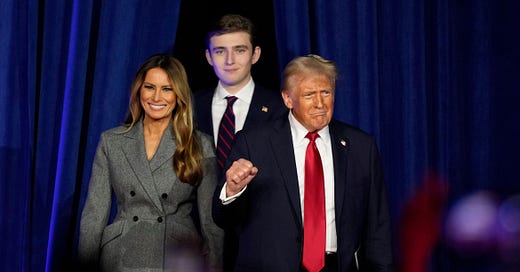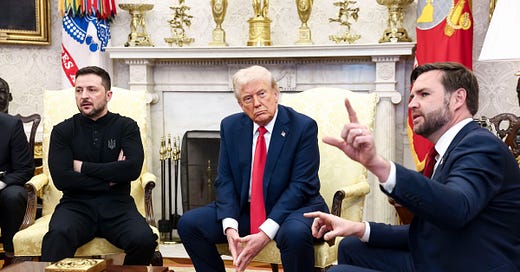Nine months ago, Vladimir Putin might have imagined his black Mercedes rolling into Kyiv for a victory parade, a few days after his tanks and troop trucks began pouring across the border. Now, with his forces locked into a grueling standoff in Eastern Ukraine and Moscow running out of options, the Russian President’s convoy instead snaked across the Crimean Bridge as part of an effort to show he is still in control of territory annexed eight years prior.
In 2014, after the Kremlin sent its infamous “little green men” to capture Crimea, preparations began on what would become Europe’s longest bridge, a symbol of the peninsula’s supposed unending ties to Russia. To celebrate its opening four years later, the country’s longtime leader put on a pair of jeans and a bomber jacket and drove an orange construction truck into occupied Ukraine as spectators watched on. Putin cuts a very different figure these days, turning up for a closely guarded secret visit to the massive infrastructure project, which was damaged in a blast in September, wearing an £11,500 puffer jacket.
And yet, the fact that Putin had to make the visit at all is remarkable. Prior to February’s full-blown invasion, most foreign nations had all but accepted Russian control over Crimea, with Moscow’s fossil fuels continuing to flow to the West while European cash and luxury goods poured in. Russia’s increasingly dire situation on the battlefield, however, is forcing many to reassess how unshakeable its grip really is.
In September, the Kremlin published a decree in which it formally declared that four regions of Eastern Ukraine – Luhansk, Donetsk, Zaporizhzhia and Kherson – were now fully-fledged parts of the Russian Federation, following a series of referendums dismissed by the international community as entirely illegitimate. Since then, though, its army has been unable to hold even the single regional capital it had managed to conquer during the war, evacuating surrounded Kherson just weeks later. Russia, it seems, is unable to keep hold of territory it considers to be Russian.
In recent days, wary Western leaders have come under fire for appearing to call for Putin to be appeased. Kyiv hit out at French President Emmanuel Macron over the weekend after he said Russia would need “security guarantees” to eventually end the war, while German Chancellor Olaf Scholz – seen by Ukrainians as a perpetually unreliable partner – spoke of welcoming Russia back into the European community following the war, chatting with Putin on the phone for an hour on Friday.
There are now predictions that fighting will slow as the winter sets in, with Washington’s Director of National Intelligence, Avril Haines, saying over the weekend that a “reduced tempo” would be expected over the coming months, before the Ukrainians have an opportunity to launch another major counteroffensive in the spring. At the same time, she added, Putin no longer has the luxury of only being told what he wants to hear by his top brass. The president “is becoming more informed of the challenges that the military faces in Russia,” she said, “but it’s still not clear to us that he has a full picture at this stage of just how challenged they are.”
With temperatures expected to drop to 20 degrees below zero, and Putin aware his forces need time to rest and resupply, it’s entirely possible that the large-front operations that have seen Kyiv regain so much territory could be put on ice. And yet, more unconventional warfare could simultaneously play a larger role, as both sides bed in and warm clothes, reliable equipment and a steady stream of supplies become more important. Under those conditions, the duel between Russian air power and Ukrainian air defenses matters more as well, given the potentially catastrophic consequences of strikes on heating and electricity grids, and on logistics centers.
On Monday, two Russian military airfields, hundreds of miles from the border, were shaken by explosions that are believed to have damaged several long-range strategic bombers. Officials in Moscow admit that targets well inside their country were hit, claiming that a Soviet-era Tu-141 Strizh drone – first made in the 1970s – was used in the attack. The idea that Ukraine is repurposing Communist-era tech might well have been designed to play down Kyiv’s growing technological supremacy, but the idea that the bulky reconnaissance UAVs could penetrate so far into Russia without being shot down is in itself a damning indictment – and one that has sparked theories of a far more sophisticated sabotage plan.
At the same time, the idea of explosions in Russian cities nowhere near the front line will do little to help the war’s already-diminishing popularity among ordinary people. “I’ve been scared since February,” one local in Samara, a city not far from one of the airfields hit on Monday, tells Reaction. “Now I’m really considering leaving for good.” In an effort to quell fears, one regional news outlet declared that the city, designed to be Josef Stalin’s second capital if Moscow fell to the Nazis in the Second World War, “has such a huge number of shelters that, if necessary, all residents can hide in them.”
With more and more Russians fearing that sanctions, conscription and military actions will begin to affect their lives – of course, far less than the war has affected Ukrainians – Putin seems to be facing a popularity problem. Kremlin Press Secretary Dmitry Peskov was pressed over the weekend on whether Putin would visit the occupied territories of Ukraine, shaking off his bunker mentality. “He will eventually,” came the reply. Instead, the Russian President went to territory his country has occupied for the best part of a decade to prove that his much-vaunted bridge hasn’t been totally reduced to rubble.
At this rate, Putin can only be hoping that military operations grind to a halt, that Western calls for some kind of favourable deal come through, and that he can give Russians something to celebrate before it’s too late.
Write to us with your comments to be considered for publication at letters@reaction.life









